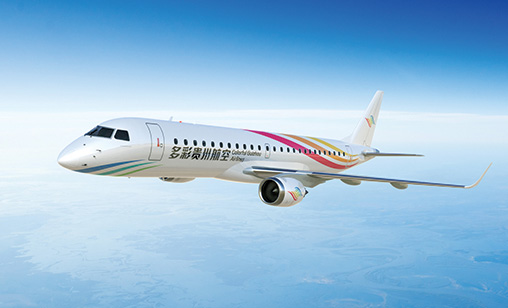News Backgrounder
China’s small airports setting records for growth
Growth at China’s major airports continues, despite major air traffic congestion. But with little fanfare, the country’s smaller facilities are expanding at a much faster rate.
May 1st 2017
Mainland China’s top 25 airports, which handle 76% of the nation’s air traffic, grew an impressive 10% in March compared with a year earlier. Read More » But in the same month, airports ranked from 26 to 50 outstripped their bigger brothers by recording growth of more than 100% for the month.
Further down the scale in the number of passengers handled, airports below the top 50 expanded at an average 40% for the 12 months to March 2017. As a result, the share in capacity at the top 25 airports declined from a past 78% of seats processed to 76% last month.
 |
The China Air Travel report, released last month by scheduling and aviation statistics consultancy, OAG said 18 of China’s smallest airports have more than doubled their capacity in just 12 months. The largest growth was recorded at Tongren Fenghuang Airport (TEN) in Guizhou province. The airport said 46,700 seats have been added to its handling services in the last 12 months, the equivalent of 1,500 extra seats a day.
Compared with March 2016, China has four new airlines operating in its domestic market: Air Guilin based in south east China; Colorful Guizhou in China’s southwest Guizhou province, Nanchang’s Jiangxi Air in the southeast and Longjiang Airlines in the northern province of Heilongjiang.
These carriers are improving connectivity beyond China’s biggest cities. Colorful Guizhou, for example, operates 18 routes and boosted Guiyang province’s destinations served from 53 to 61.
In March, the Civil Aviation Administration of China (CAAC) reported that for the 12 months to March 2017, airline capacity grew at 10.9%, to reach 733.6 million seats. For March only, capacity was 62.3 million seats, 9.4% more than a year ago.
At China’s biggest airports growth varied. Guangzhou, Chengdu and Kunming airports reported expansion of between 12%-14%. Kunming Airport was top of the table with 15% more seats available in March compared with 12 months ago. Lucky Air, China Eastern Airlines, Kunming Airlines and Ruili Airlines spurred the growth.
With the exception of Chongqing, the Mainland’s biggest airports reported a fall in on-time performance (OTP) in February compared with the same month in 2016. Among the top ten Mainland airports, Xian Xianyang recorded the highest OTP in February, with 79% of flights arriving on time. Next best was Chongqing, at 74% OTP for its flights.
A government source told local Shanghai media another airport will be built in the city to relieve pressure on the existing facilities, Pudong and Hongqiao. A director of the East China branch of the Civil Aviation Administration of China (CAAC), Jiang Huaiyu, said the new airport would primarily be for private aircraft and business jets.
“It is necessary for Shanghai to build a third airport to satisfy demand,” Jiang said on the sidelines of the Asian Business Aviation Conference and Exhibition in the city last month. The city’s fathers, the airport authority and CAAC have started researching a plan for the airport, he said.
In 2016, Pudong and Hongqiao airports handled 6,136 business jets, up 10% year-on-year. To satisfy demand, a business jet hangar is being built at Hongqiao and a similar facility is planned at Pudong. Last year, Shanghai became one of only five cities in the world to handle more than 100 million air passengers.